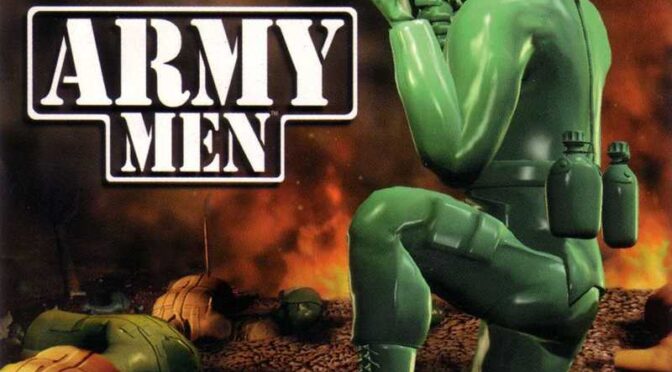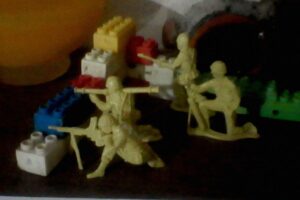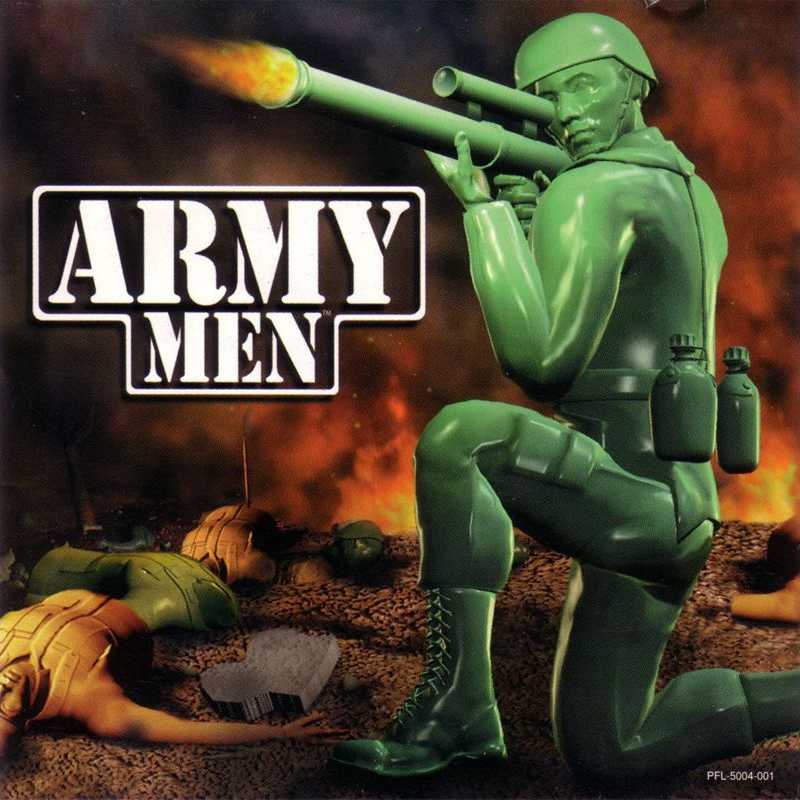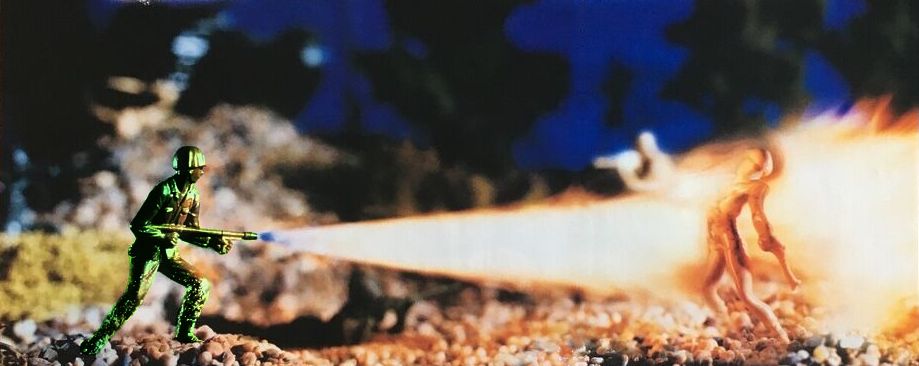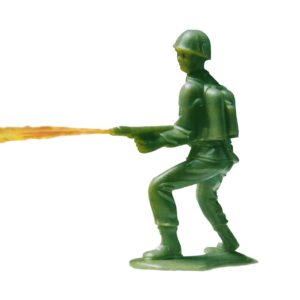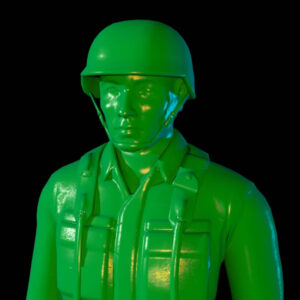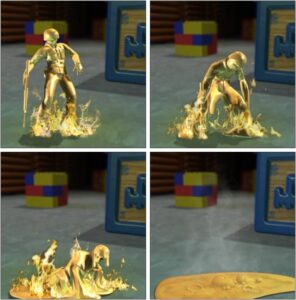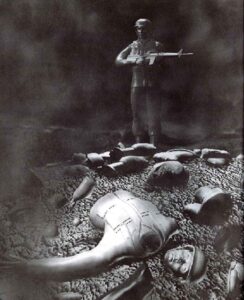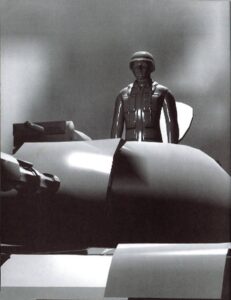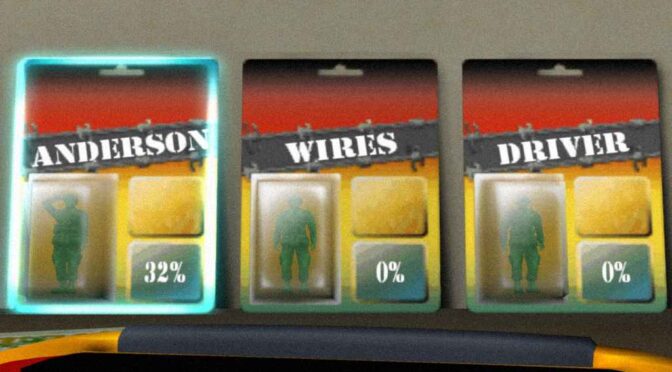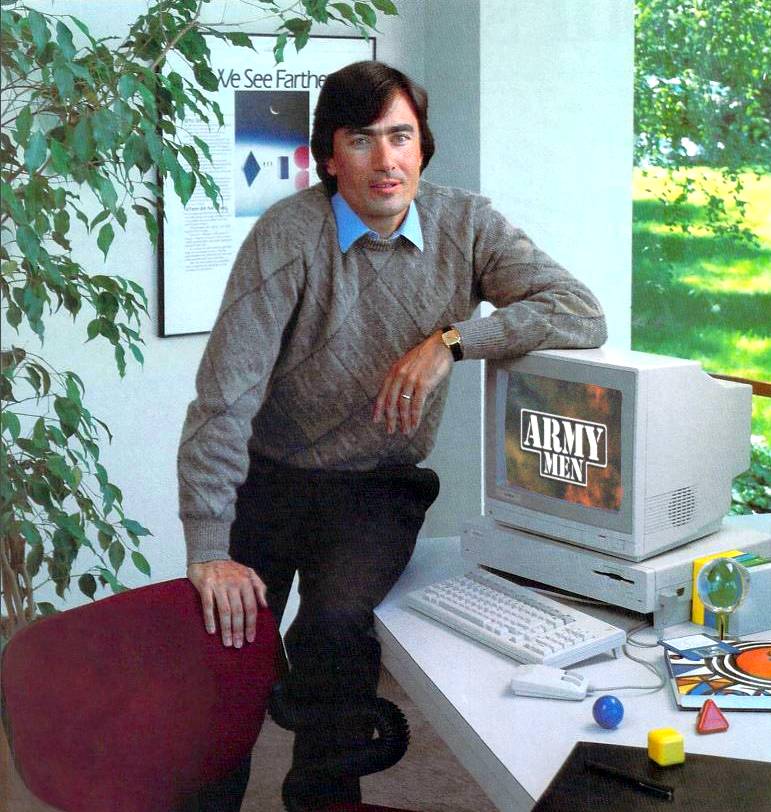Exclusive interview with Trip Hawkins and Keith Bullen
During the mid-to-late 1990s, as video games began branching out beyond traditional genres, a surprisingly simple idea sparked the birth of one of gaming’s most memorable franchises. That spark was to bring the iconic green plastic toy soldiers (the Army Men) to digital life. What followed was a mix of action, strategy, and tongue-in-cheek satire that would grow into a universe of its own: the early foundations of what we now call the Toyverse.
The project emerged from The 3DO Company, founded by industry pioneer Trip Hawkins, who had already changed gaming history with Electronic Arts. At that time, 3DO was primarily focused on software development and searching for its next big concept… something that could blend strategy, humor, and accessibility. The result went far beyond expectation, shaping not just a game, but a world of plastic warfare and nostalgic imagination.
Origins of the Idea
It all began in 1996, when Keith Bullen, an art designer from Electronic Arts, was hired by 3DO to direct the visuals for a new project, then tentatively called War Sports. The goal was to create something in the spirit of Return Fire, 3DO’s popular vehicular shooter, but with stronger squad-based mechanics. Marketing wanted an “E for Everyone” rating, an idea ironically tied to the ESRB system that Trip Hawkins himself had helped establish.
“I remember various marketing meetings when ideas like green blood and making the soldiers robots were brought up as ways to get the game a friendly rating. I didn’t like any of these ideas.” – Keith recalls
At that time, that’s what was done with Half-Life to sell it in Germany: making the human enemies… robots.
Months passed without a clear direction, until Bullen had a eureka moment. He thought back to his childhood days, setting up tiny armies in the backyard and taking turns throwing rocks with his brother to knock them down. That memory (of creativity, chaos, and fun) became the emotional core of Army Men.
The toy soldiers had long been a universal symbol of imagination. From the Louis Marx playsets of the 1950s to Toy Story in 1995, these little green figures had stood the test of time. By centering the game around them, Bullen found a way to capture both nostalgia and originality, something fun for players who wanted a break from the gritty realism and machismo of other war games.
Building the Plastic World
Once the toy soldier idea took hold, Keith’s role evolved from art director to lead designer.
“Once the soldiers became plastic, we had to come up with a universe with real terrains and plastic soldiers,” he says. “We wanted the world to feel serious to the Army Men characters’ point of view but fun and nostalgic for the player.”
This is key: “The (plastic) world had to feel real and serious for the Army Men.” With these words, coming from Keith Bullen himself, we can cement this as a fact, dispelling any doubt or denial: For the inhabitants of the Plastic World, war is not a joke… it’s serious. That’s why Sarge’s War isn’t excluded from the equation (as many fans wish), because whether we like it or not, it respects this original principle of the idea behind Army Men.
The team paid careful attention to the way plastic behaved in real life, how light hit its glossy surface, how it bent, shattered, and melted.
“We paid close attention to the physics in the animations. It was very important to me that the plastic pieces reacted to the world as if they were made of the same light plastic as the original figures.”
But turning that idea into a finished product wasn’t easy. The small team of six soon grew to more than ten as Bullen became creative director.
“It was very challenging convincing the team to adopt my new gameplay ideas… It took several months to finally get everyone on board.”
Executives were another obstacle. Early pitches for Army Men were dismissed as childish, “too young” some said. RTS fans, they argued, wouldn’t take seriously a game about toys. Yet Bullen persisted, finding clever ways to win people over.
“I then bought a 3D model of a generic Army Man and brought in some classic toy green and tan Army Men to use as pose references,” he remembers.
“For several weeks, many people from every department in the company would stop to discuss the posed 3D model… Soon after, the momentum switched from the product being perceived as too juvenile to being an awesome nostalgic experience.”
This is key: “I then bought a 3D model of a generic Army Man”. This is a direct confirmation of the source of the classic Army Men 3D model: it was purchased, obtained from 3D model packages, in this case the ViewPoint DataLabs ones (and it’s not the only 3D model from third party sources).
That was the turning point. Nostalgia had done its job.
From the Backyard to the Battlefield
The next challenge was translating the tactile world of toy soldiers into an interactive one. The developers recreated classic units like riflemen and bazooka troopers, while experimenting with how plastic would melt or break apart.
“We destroyed many plastic Army Men in the 3DO parking lot for the sake of realistic plastic physics,” Keith admits.
“The enhanced fear of fire when you are made of plastic was a theme we relied on throughout the series.”
To tie everything together, Army Men adopted a satirical tone. The game opened with a mock newsreel showing the totalitarian Tans preparing to invade the Greens.
“We watched many hours of authentic old reels… The Tan leader gesturing like Mussolini was one of my favourite segments.”
Originally planned as a real-time strategy game, Army Men evolved into something more direct and personal. Players would take control of Sarge, a Green Army hero.
By the way, it was the RTT (Real Time Tactics) videogame, not a RTS. At least we called it that way today.
“I’ve always preferred arcade-like action games over strategy games,” says Keith.
“So I redesigned the game around the central character of Sarge… as in games like Ikari Warriors.”
The final product blended tactical movement with fast-paced action.
“The gameplay became more about tactics, rather than strategy,” Bullen notes, crediting Crusader: No Remorse as an influence.
Trip Hawkins’ Perspective
One of the concept’s earliest champions was 3DO founder Trip Hawkins himself.
“Toy soldiers were my dominant play pattern as a child and I’d always invented strong storylines and adventures around them,” he says.
“Besides all the World War soldiers, I had Swoppets from the Wars Of The Roses, Roman centurions, and others – including cowboys, of course.”
Hawkins immediately recognized the blend of nostalgia, humor, and design potential behind Army Men.
“It inspired me to do something more central with humour in the genre and a stronger narrative.”
To him, the plastic theme wasn’t just an aesthetic choice: it was a creative platform.
“We were focused on the US market… nobody cared about them, because they’d not grown up with those toys.”
Despite the game’s playful tone, Hawkins insisted that warfare and destruction were essential to the experience.
“Creatively, we also wanted to have fun repeating some of the famous play patterns from childhood… It allowed us to cast our villains with a bit of sadism, that is still funny because… they’re just toys.”
A Legacy Beyond Plastic
The development cycle lasted just over a year, despite several restarts. Once the formula clicked, Hawkins knew they had something special.
“This is what we live for in game development and publishing… to do something we really believe in and love.”
Across three themed terrains (desert, alpine, and swamp) Army Men culminated in a memorable twist: Sarge crossing into the Real World, a scene that would directly lead into Army Men II. The franchise quickly exploded, selling over 7 million copies across every major platform and generating more than $300 million in revenue.
Looking back, Bullen reflects on the impact of that first title:
“I never would have imagined that it would spawn 23 sequels and spin-offs… My goal was to create a game that I would want to play and not a clone of a game I had played before.”
Indeed, Army Men defied easy classification. It was part shooter, part strategy, part parody… a digital sandbox that reimagined childhood battles through the eyes of living toys. Beneath the surface, it captured something universal: the creative spirit of play itself.
From Sarge’s Heroes to the ever-expanding Toyverse, the legacy of those little plastic soldiers continues to march on.
Sources for this article:
Original source: Retro Gamer (2019), “The Making Of: Army Men” by Hareth Al Bustani.
https://www.pressreader.com/uk/retro-gamer/20190516/281672551382117
Edited and adapted for armymen.com.ar
